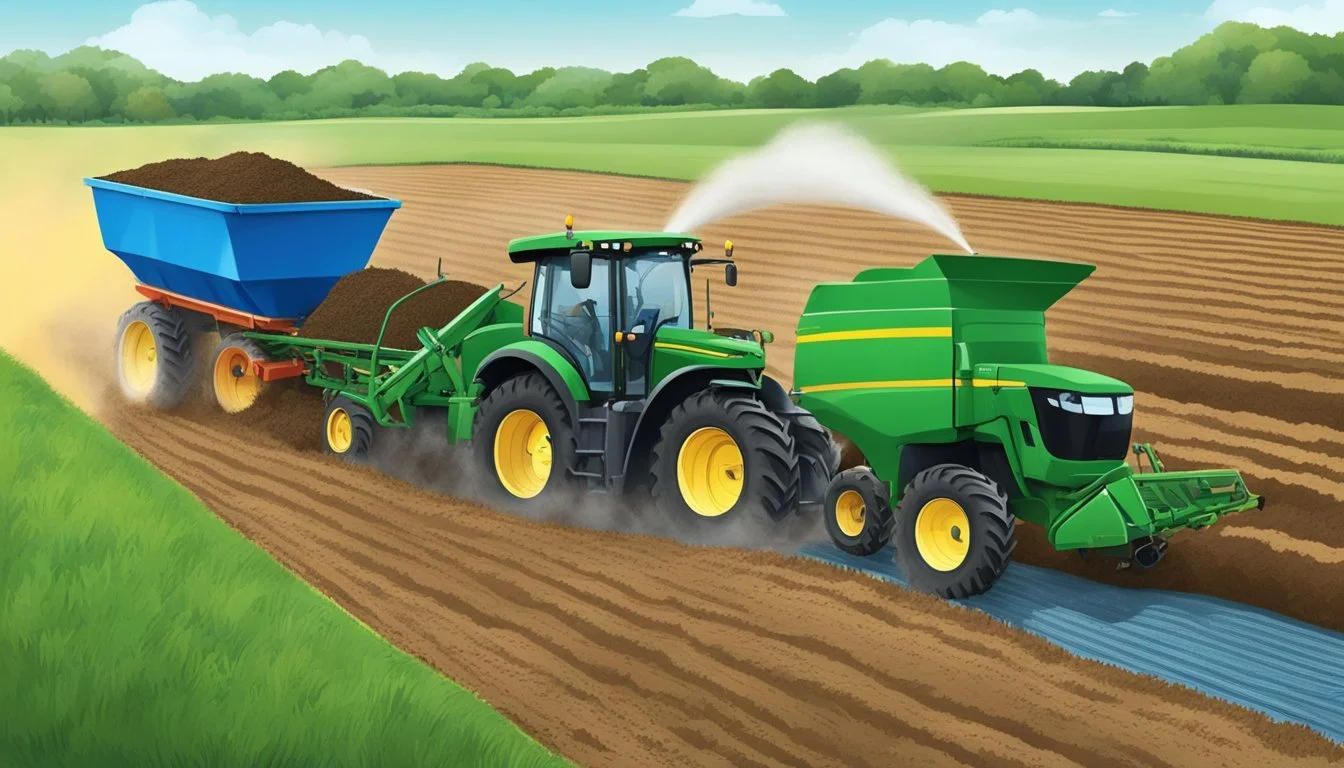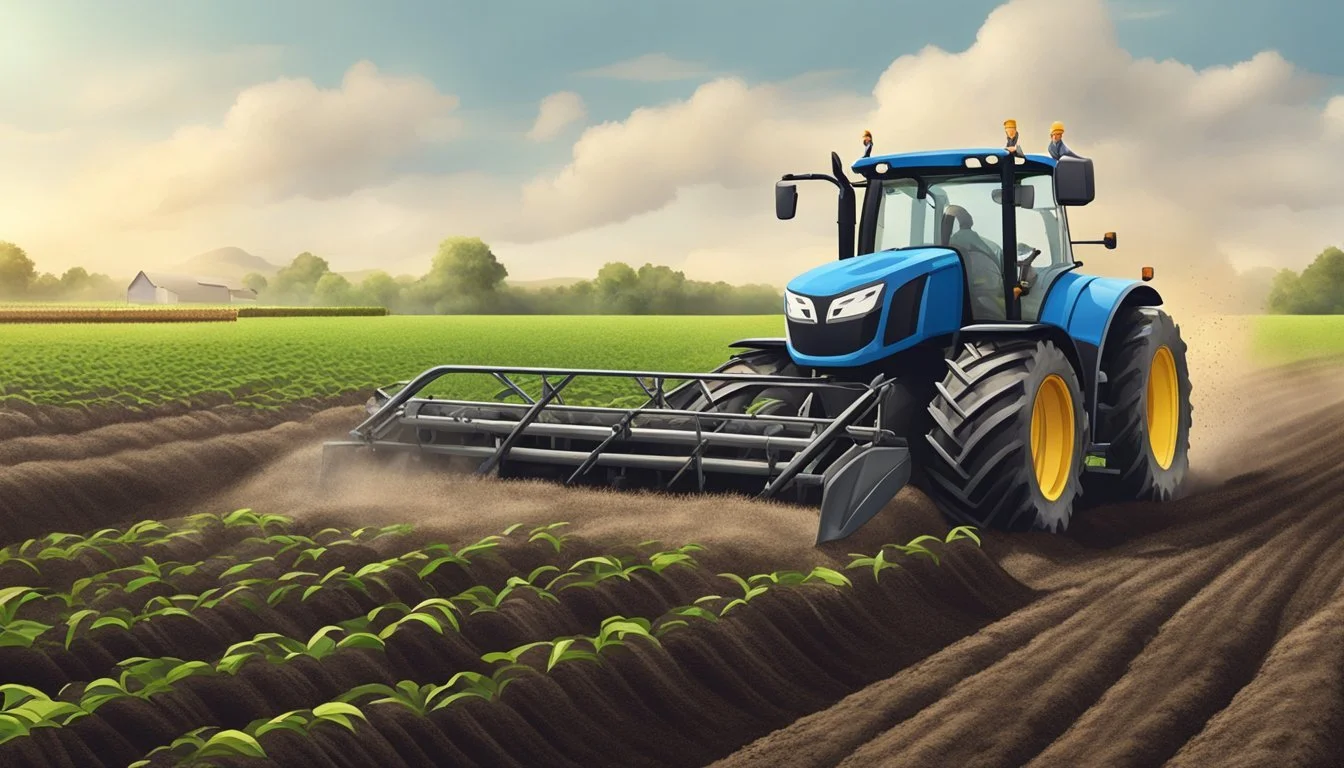How Can I Use Cattle Manure as Fertilizer
Practical Tips for Gardeners
Cattle manure, commonly referred to as cow dung, is a natural byproduct of the beef and dairy industries—a resource often abundant for those in rural areas or individuals involved in agriculture. Traditionally, it has been valued as a rich, beneficial fertilizer that can enhance soil fertility and plant growth. The organic matter in cow manure not only helps improve soil structure and water retention but also slowly releases n compostiutrients such as nitrogen, phosphorus, and potassium, which are essential for plant health.
When considering the use of cattle manure as a fertilizer, it's critical to understand the importance of proper composting. Fresh cow dung has high ammonia levels that can burn plants and contains pathogens that may be harmful if they come into contact with food crops. Therefore, composting cow manure properly is key to its safe and effective use. Through composting, the manure is broken down into a more stable form, which eliminates potential bacteria and makes the nutrients more accessible to plants.
Using cow manure that has been composted is a safe and effective way to add organic matter to the garden. By incorporating composted cow manure into the soil, gardeners can promote healthier plant growth and more fruitful harvests. It is an eco-friendly alternative to synthetic fertilizers, beneficial for plants and contributing to a more sustainable cycle of organic matter in the environment.
Benefits of Using Cattle Manure as Fertilizer
Cattle manure offers an array of benefits for gardens and crop fields, primarily as a nutrient-rich natural fertilizer that enhances soil health. It contributes positively to the organic matter content, improving soil structure, moisture levels, and overall fertility.
Nutrient-Rich Soil Amendment
Cattle manure is a valuable source of essential nutrients required for plant growth, including nitrogen, phosphorus, and potassium. The process of composting cattle manure further concentrates these nutrients, rendering composted cow manure a beneficial and balanced soil amendment. The presence of macro and micronutrients in the manure can significantly increase the soil's fertility over time.
Enhanced Soil Structure and Aeration
Adding cattle manure to the soil improves its organic matter content. Higher organic matter levels lead to better soil structure, which promotes aeration and offers a hospitable environment for beneficial microorganisms to thrive. Improved soil structure also prevents compaction, allowing roots to grow more easily and access the nutrients they need to support healthy plant development.
Increased Water Retention
Organic matter from cattle manure enhances the soil's water holding capacity, allowing it to retain moisture more effectively. This ability to hold water reduces the need for frequent irrigation, a particular advantage during dry spells. Greater moisture retention also contributes to a more stable and resilient soil environment, supporting consistent plant growth.
Preparation of Cattle Manure
Proper preparation of cattle manure is critical for effective use as a fertilizer. This involves preparing fresh manure through various methods to ensure it is safe for plants and soil health.
Drying and Storage
Before composting, fresh manure should be dried to reduce moisture content, which aids in the composting process. Storage of manure is equally important; it should be kept in a covered area to prevent nutrient runoff. Manure spreaders are often used to transport and evenly distribute dry manure over fields.
Composting Process
Composting fresh manure is a controlled process that involves piling manure, optimally mixed with carbon-rich materials, to enhance decomposition. The temperature within the compost pile should be monitored and maintained between 140°F to 160°F, as proper heat levels are necessary to kill pathogens and weed seeds.
Manure Compost Maturation
After the active composting phase, the composted manure must be cured or matured. During this period, the temperature of the pile decreases, and microbial activity stabilizes the nutrients. Composted cow manure should be mature enough that it has no foul odor and its texture is crumbly before being applied to the soil.
Application Methods
The effective use of cattle manure as a fertilizer depends on the method of application. This ensures appropriate nutrient distribution and soil integration to support plant growth in gardens and fields.
Top Dressing and Side Dressing
Top dressing applies cattle manure directly to the soil surface around the plants, which provides slow-release nutrients, especially useful in vegetable gardens and for ornamental plants. This method is simple and does not disturb growing plants. For side dressing, apply manure in a narrow band alongside growing crops to target nutrient application and benefit the plants throughout the growing season.
Incorporation into the Soil
Incorporation involves mixing manure into the soil, effectively enriching the soil's nutrient content before planting. This technique helps in evenly distributing the manure's nutrients and enhancing the soil texture. It's ideally done during soil preparation stages to allow the breakdown of organic material, ensuring nutrients like nitrogen, phosphorus, and potassium become readily available for the future crops.
Use as Mulch or around Perennials
Using cattle manure as a mulch provides a protective layer, which helps retain soil moisture and reduce weed growth. This application is particularly advantageous for edible crops, as it gradually improves soil fertility as the manure decomposes. When used around perennials, it enriches the soil and benefits the root systems without the need for frequent application.
Safety and Health Considerations
When using cattle manure as fertilizer, it is essential to consider factors such as pathogen elimination, weed seed proliferation, and odor control to ensure consumer safety and maintain good relationships with neighboring properties.
Pathogen and Parasite Elimination
Thermophilic decomposition is one vital process for the safe conversion of cattle manure into fertilizer. This process involves composting the manure at high temperatures, which effectively kills harmful bacteria, pathogens, and parasites. The FDA acknowledges the risk posed by raw manure, hence the importance of a strategic risk assessment necessary for consumer health.
Weed Seed Management
To prevent unwanted vegetation, effective weed seed management is necessary when applying manure to soils. During the composting phase, temperatures must be sufficient to destroy resilient weed seeds that could otherwise propagate and compete with crops. This practice not only ensures a safe and efficient fertilization process but also contributes to robust crop health and yield.
Odor Control and Neighboring Properties
Lastly, odor control plays a critical role in using manure as fertilizer due to the potential impact on nearby communities. Through proper composting techniques and timely application, the intensity of odors can be minimized, preventing smell-related disputes with neighboring properties. Practices such as incorporating manure into the soil can reduce the release of odorous compounds, demonstrating a responsible and respectful approach to manure management.
The Role of Manure in Soil Fertility
Cattle manure plays a crucial role in enhancing soil fertility by providing essential nutrients and improving soil structure. Efficient use of manure contributes positively to sustainable agriculture.
Balancing Soil pH Levels
Cattle manure acts as a natural buffer, aiding in the balance of soil pH levels. An optimal pH level is vital for the availability of nutrients to plants. Utilizing manure can help neutralize acidic soils, often negating the need for synthetic lime. Regular soil tests are essential to determine the pH level and how much manure may be required to maintain fertility.
Contribution of Key Minerals
The organic matter within cattle manure is packed with key minerals necessary for plant growth. These include phosphorus (P), potassium (K), and sulfur (S), among others. The gradual release of these minerals as the manure decomposes prevents leaching and provides a steady supply of nitrogen, phosphorus, and potassium—elements commonly found in commercial nitrogen fertilizer and phosphorus fertilizer.
Nitrogen (N): Essential for plant growth and green leaf development.
Phosphorus (P): Supports the development of roots and flowers.
Potassium (K): Regulates plant metabolism and water uptake.
Interaction with Soil Microbes
The application of cattle manure creates a fertile environment for soil microbes which are integral to the biological properties of soil. These microbes break down organic matter, releasing additional nutrients and improving soil structure. Enhanced microbial activity can lead to improved soil aeration and water retention, creating a robust ecosystem for plants. The interaction between manure and soil microbes ultimately builds soil organic matter and stimulates a self-sustaining cycle of fertility.
Ecological Aspects of Using Animal Manures
Using animal manures such as those from cattle offers a sustainable approach to gardening and farming. It reduces the dependency on synthetic chemicals while supporting local farming communities.
Sustainable and Natural Gardening
Animal manures are an inexpensive and organic resource for gardeners and farmers. They enrich the soil with nutrients necessary for plant growth, which can lead to more robust gardening results. For instance, utilizing cattle manure in North Dakota gardens could enhance soil fertility while adhering to NDSU Extension agent recommendations for sustainable agriculture practices.
Reduction of Chemical Fertilizers
The application of animal manures minimizes the reliance on chemical fertilizers. This shift not only has a positive effect on the environment but also promotes a more natural and balanced ecosystem within agricultural soil. Data from the National Agricultural Statistics Services show that reducing chemical usage through organic amendments like manure can contribute to healthier soil and water ecosystems.
Supporting the Local Agricultural Community
Procuring manure from local farms helps bolster the agricultural community by creating a circular economy. Animal manures are versatile in use and support a local farm's economic stability. Moreover, by sourcing manure locally, one promotes a connective agricultural framework that benefits local producers and consumers alike.
Additional Considerations in Manure Use
When incorporating cattle manure into agricultural practices, it is essential to understand the specific needs of the plants, choose an appropriate type of manure, and accurately determine the right application rates for optimal results and soil health.
Plant Growth and Development Impact
Cattle manure is acknowledged as an all-purpose fertilizer due to its nutrient content, which contributes to soil fertility and, in turn, supports plant growth. While cattle manure can be directly applied, composting it may increase its benefits by reducing pathogens and weed seeds. However, the drawbacks such as potential over-application leading to nutrient runoff must be managed through effective nutrient management planning. For specific crops like leafy greens, attention to nitrogen (N) content is critical to avoid excessive growth at the expense of flavor or texture.
Choosing the Correct Manure Type
Different types of manure, such as horse manure, chicken manure, and pig manure, vary widely in their nutrient composition. For example:
Horse manure: Generally has a lower nutrient content but is excellent for improving soil structure.
Chicken manure: High in nitrogen, excellent for composting but must be properly aged to avoid burning plants.
Pig manure: Rich in nutrients, especially when pigs are fed a vegetarian diet, but should be well-composted before use.
Sheep and goat manure: Dry and pelleted, making it easy to handle and apply without composting.
Choosing the right type of manure involves considering the crop requirements, the existing soil P (phosphorus) levels, and the objectives, such as whether the focus is more on nutrient supply or improving soil bulk density.
Ration and Calibration for Application
The application rate of manure depends on the nutrient management goals and the rations of nutrients in the manure. Planning involves:
Ration: Balancing the nutrient supply with plant needs to prevent both deficiencies and excessive nutrient build-up.
Calibration: Ensuring the even distribution of manure over the intended area. Consistent application is key for both crop success and environmental protection.
It's advisable to have a well-outlined manure management plan to optimize the use of manure as fertilizer. This plan should include calibration methods for spreading manure, such as:
Spreaders equipped with accurate calibration tools.
Periodic testing of application rates to confirm consistency.
Using manures in the backyard or for houseplants might involve simpler practices, like creating a compost pile for cow manure or using worm castings for small-scale gardening.





